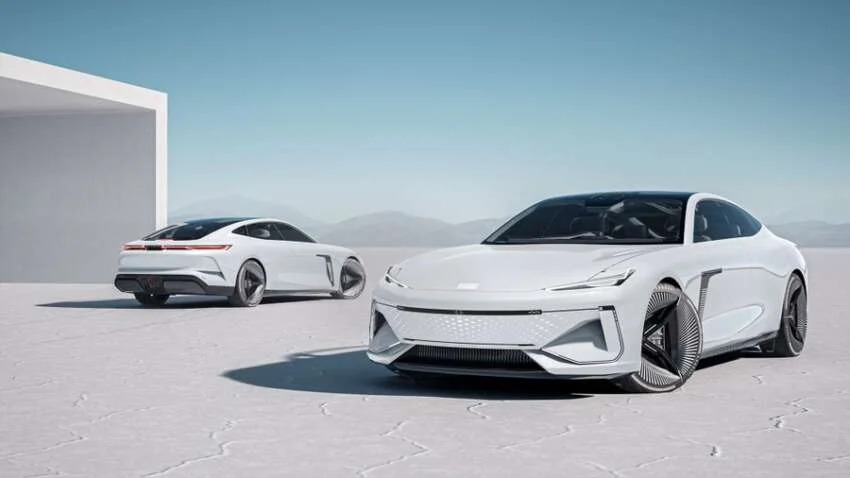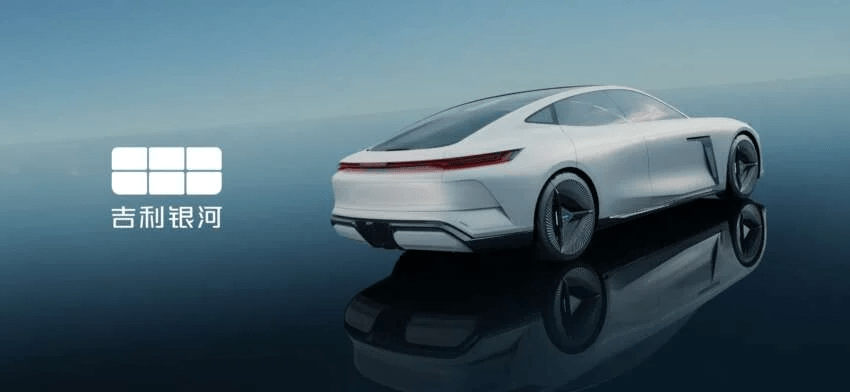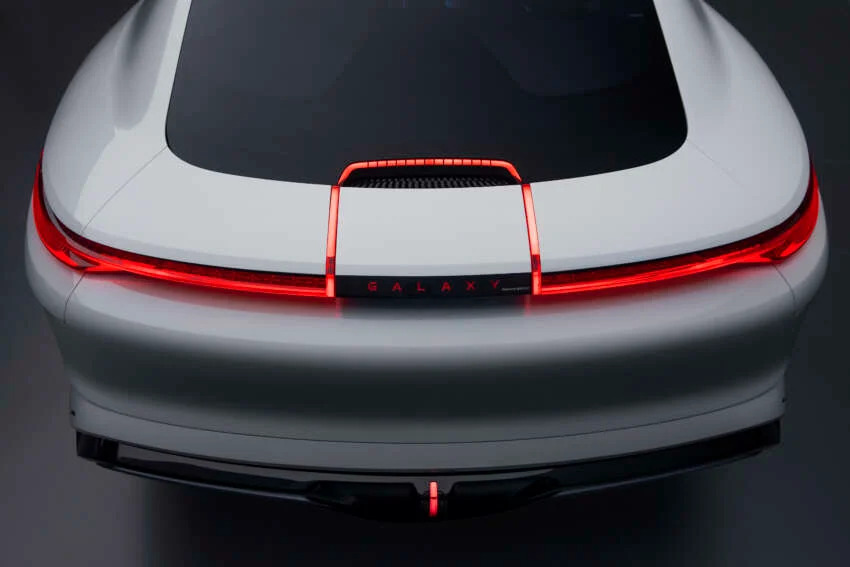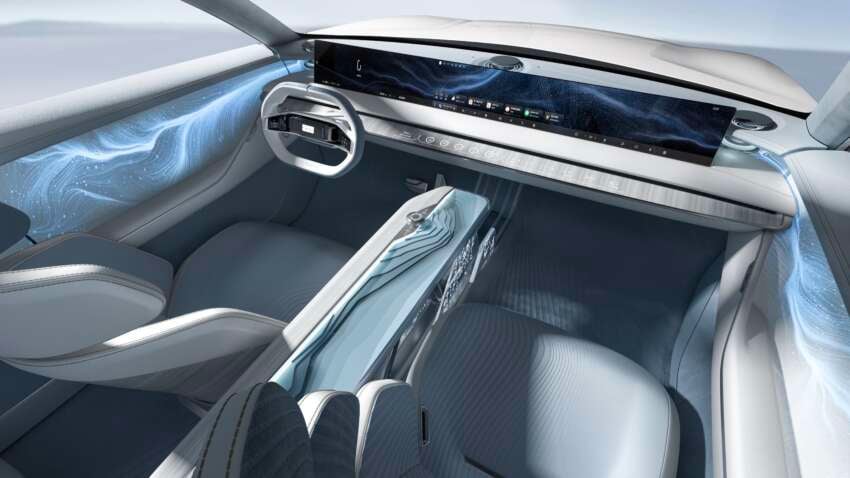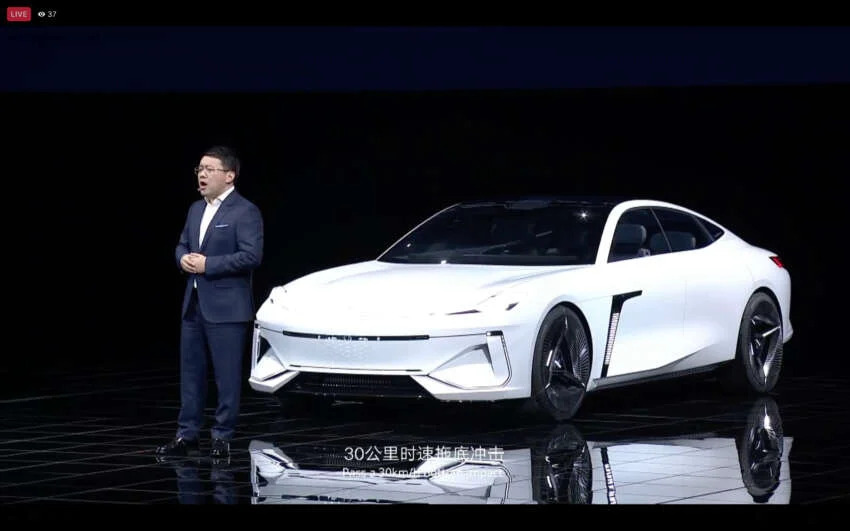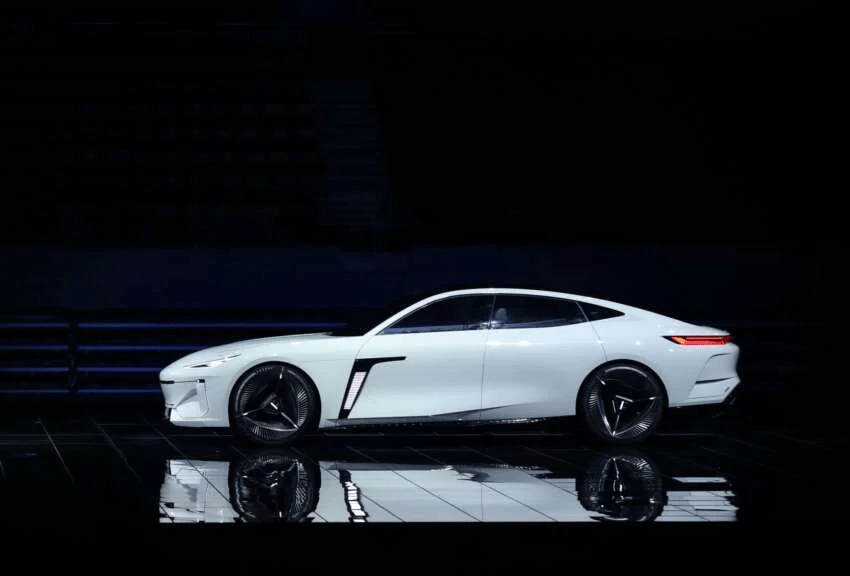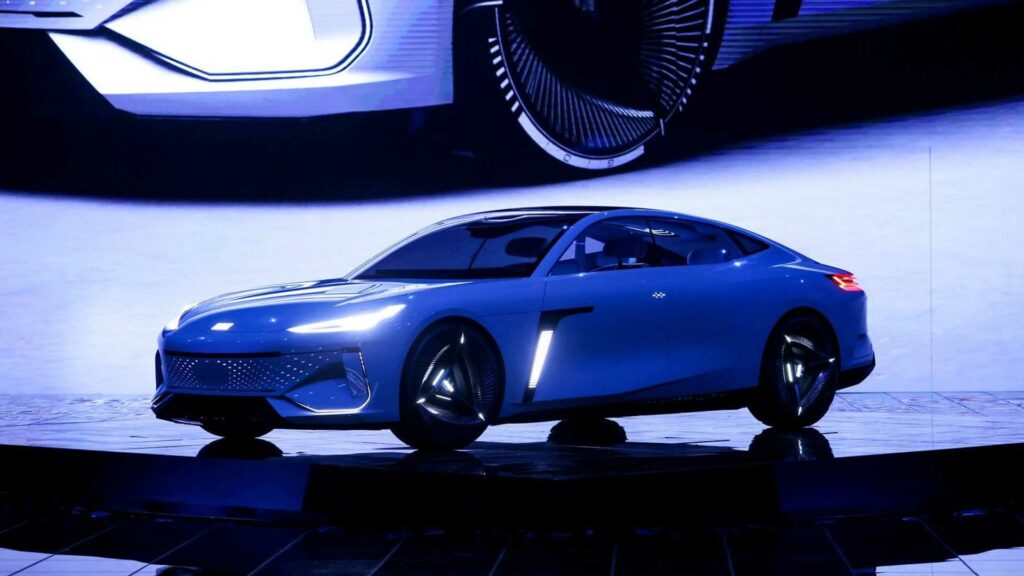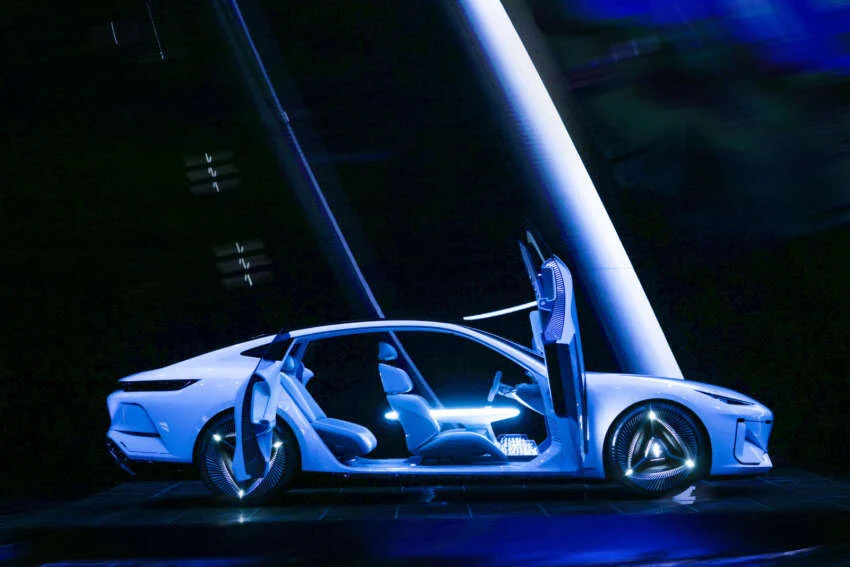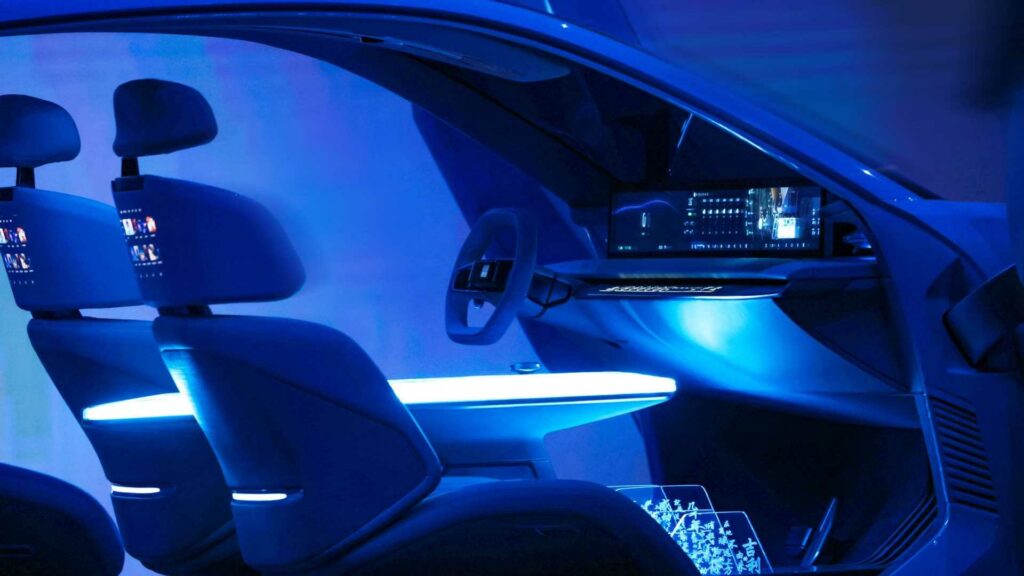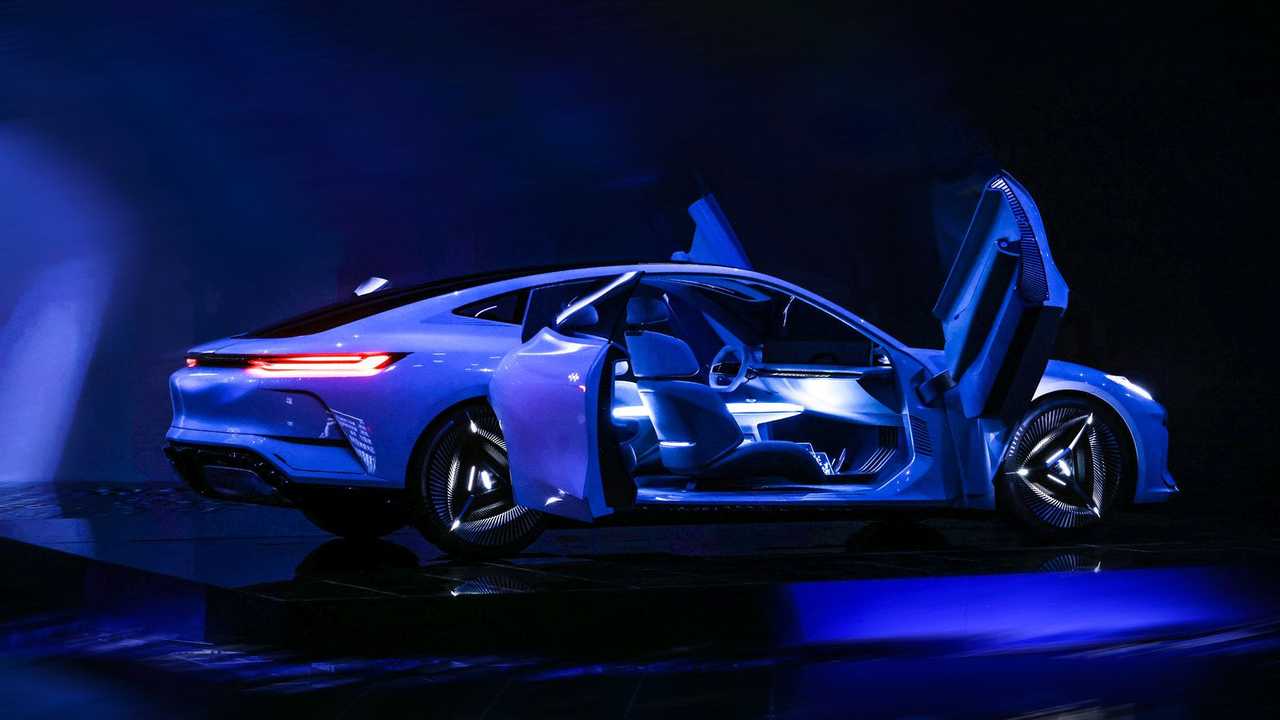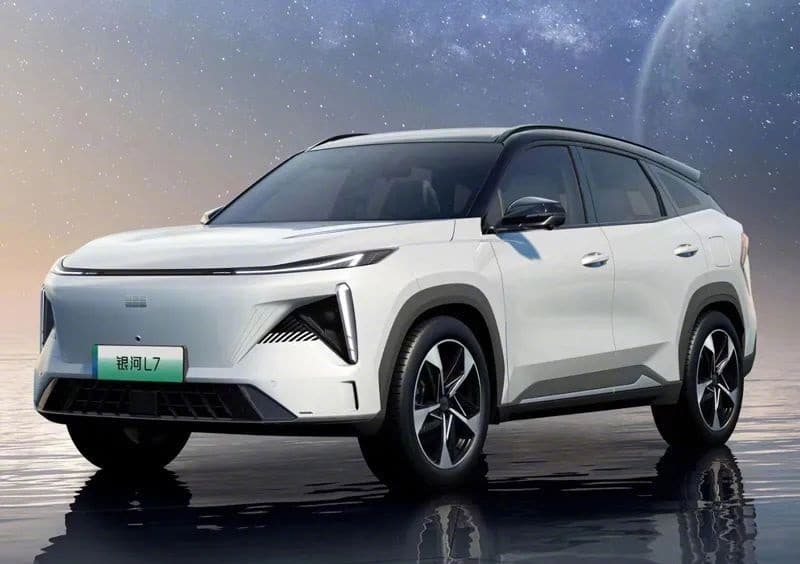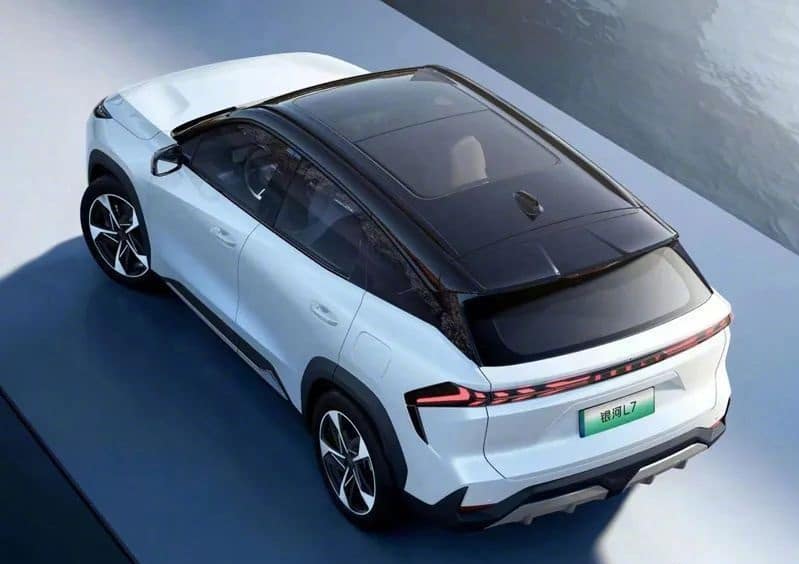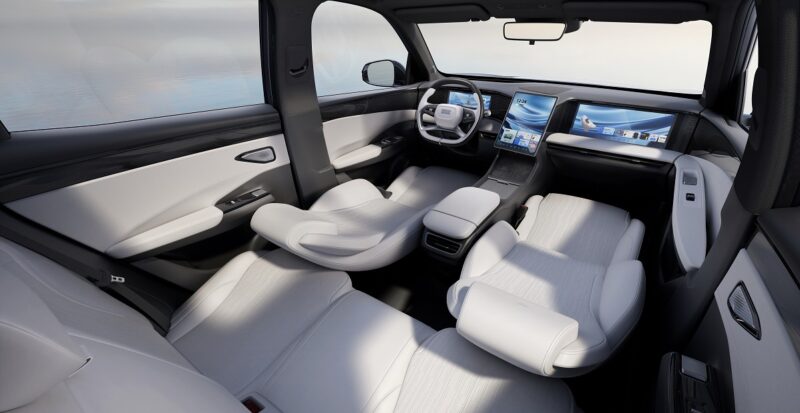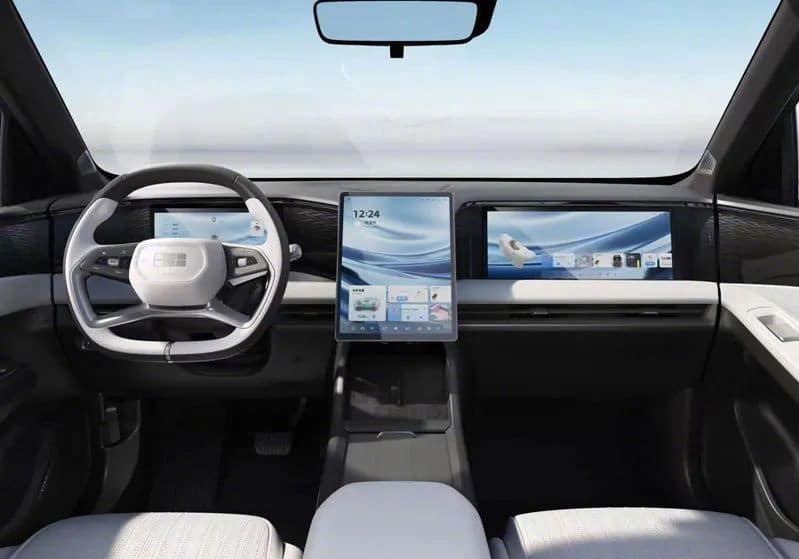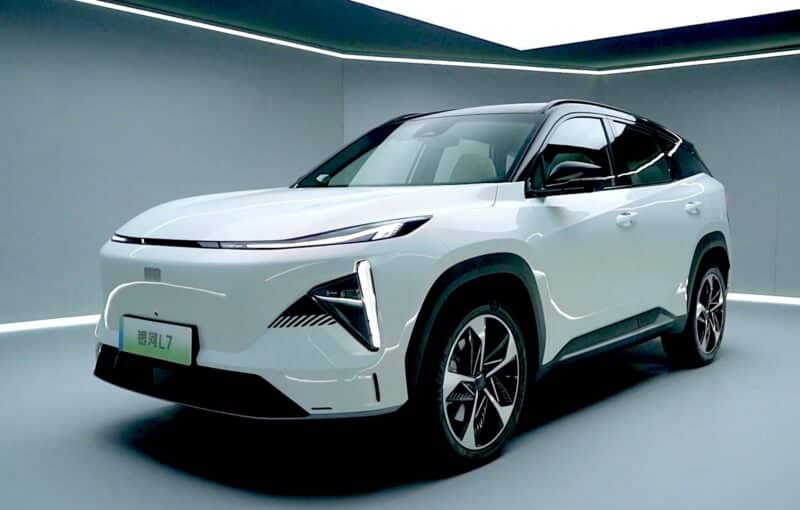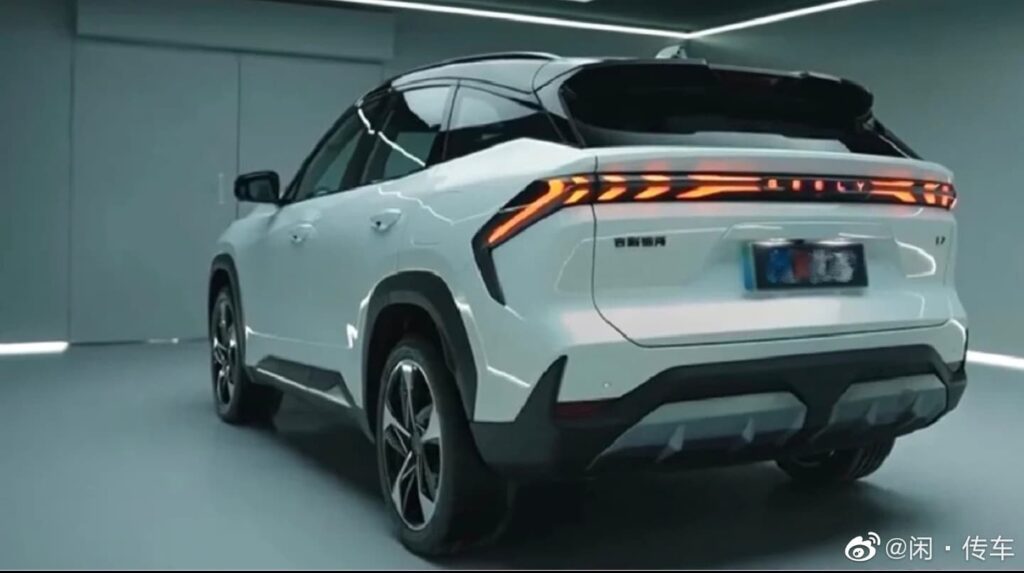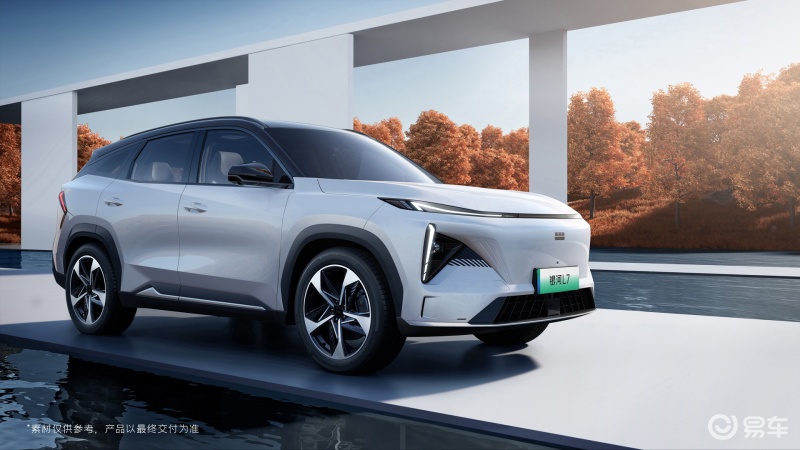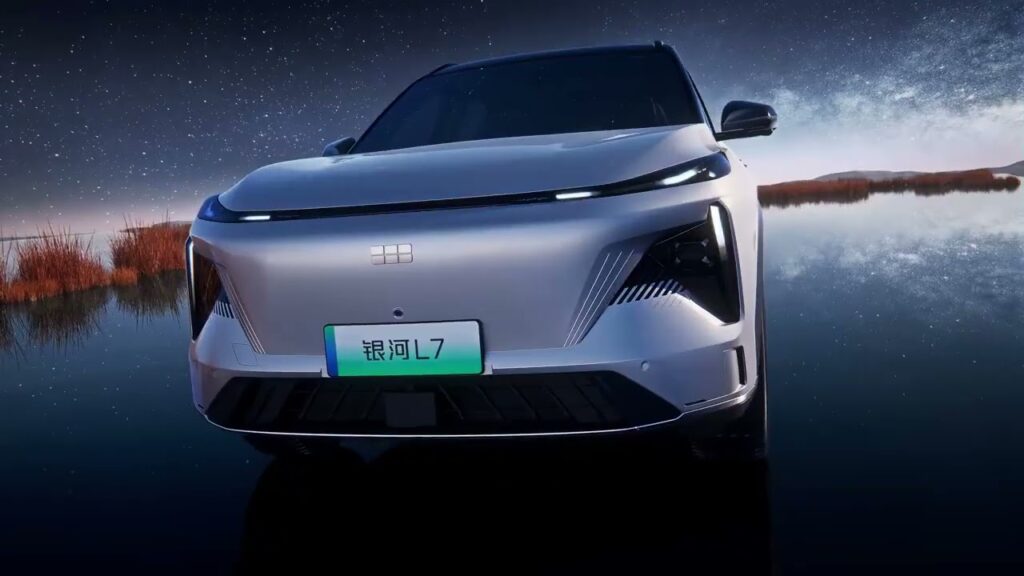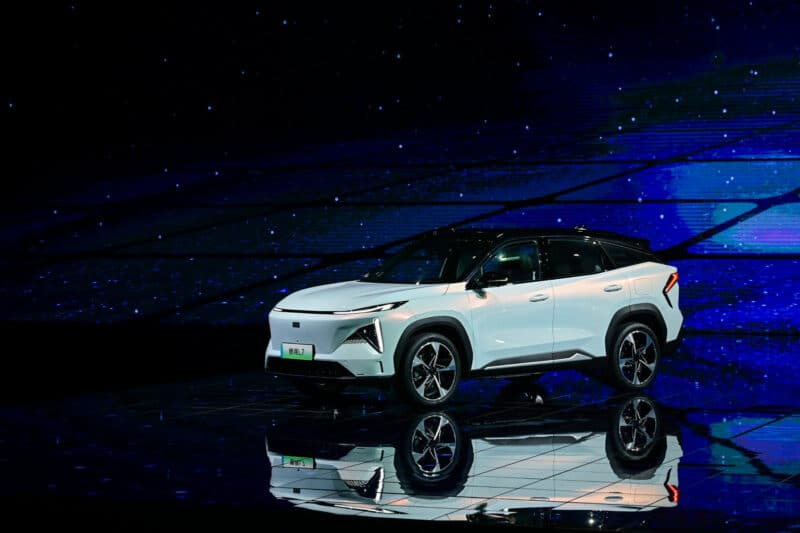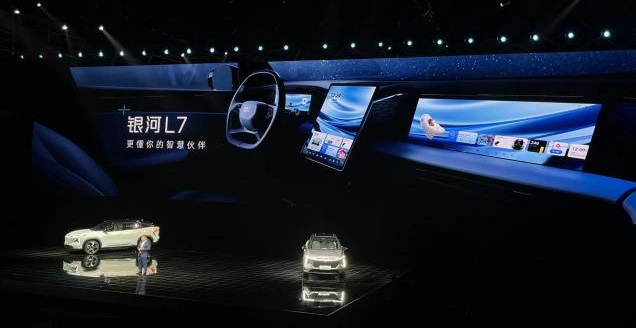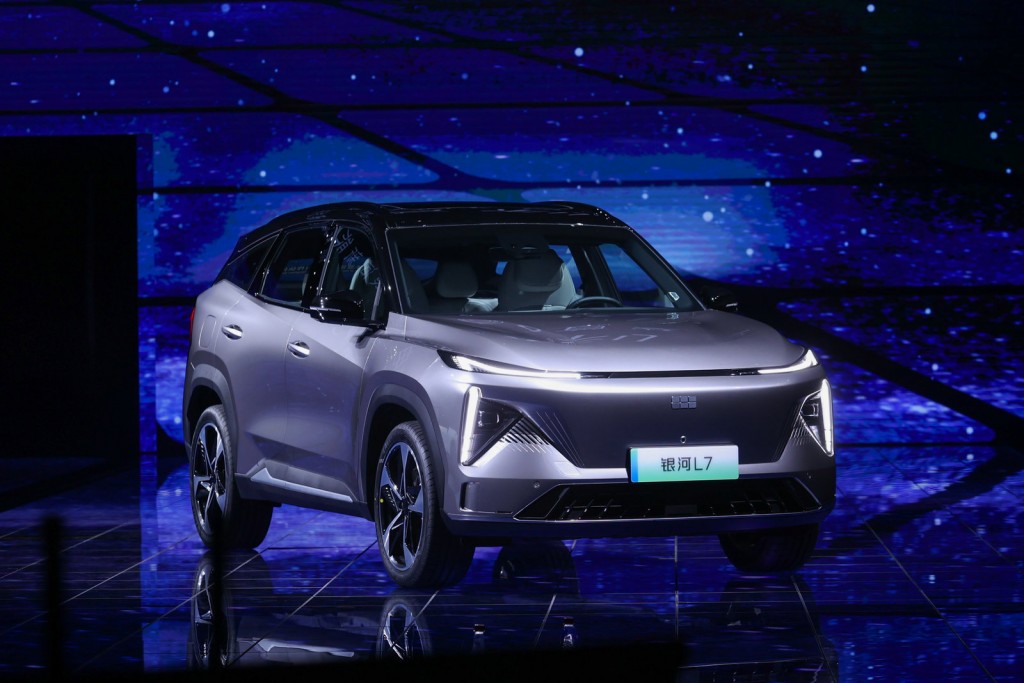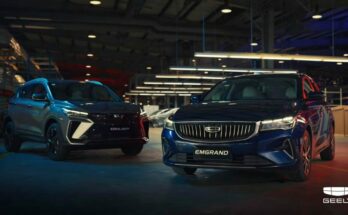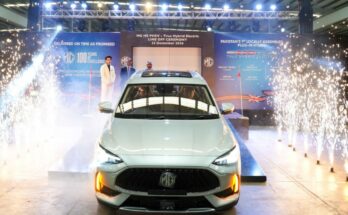Geely has launched its new NEV (New Energy Vehicle) sub-brand called Galaxy (Yinhe 银河 in Chinese: translating into MilkyWay) which is targeted towards the mid-to-high-end vehicle market in China.
The Geely Galaxy includes two product series, namely, the “L” and the “E”, which focus on hybrid electric vehicles (HEVs) and battery electric vehicles (BEVs), respectively. It will adopt a completely new brand image, Geely’s new-generation styling design, and a fire new sales and service channel ecosystem.
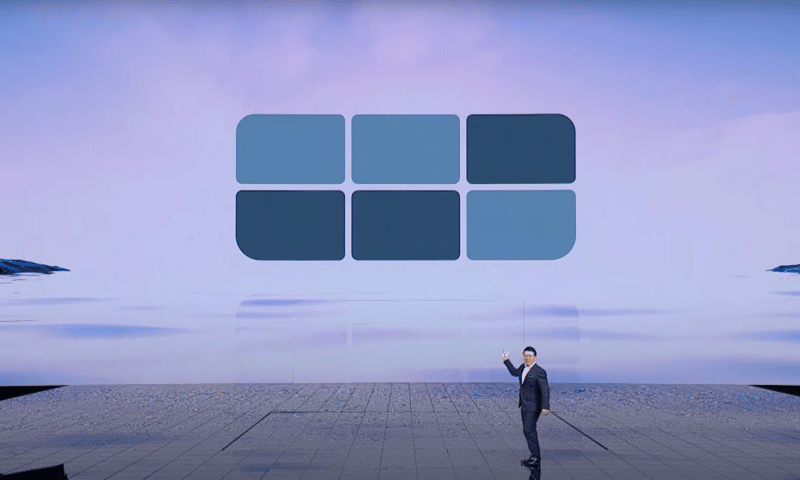
The Chinese auto giant also announced the consolidation of many of its brands and series – the Geometry independent brand will return under Geely as a Geometry series and, together with the Galaxy and Star series, will be the three main sub-brands of Geely. Geely Holding currently owns over 10 independent car brands, including Volvo, Lotus, Lynk&Co, and Zeekr.
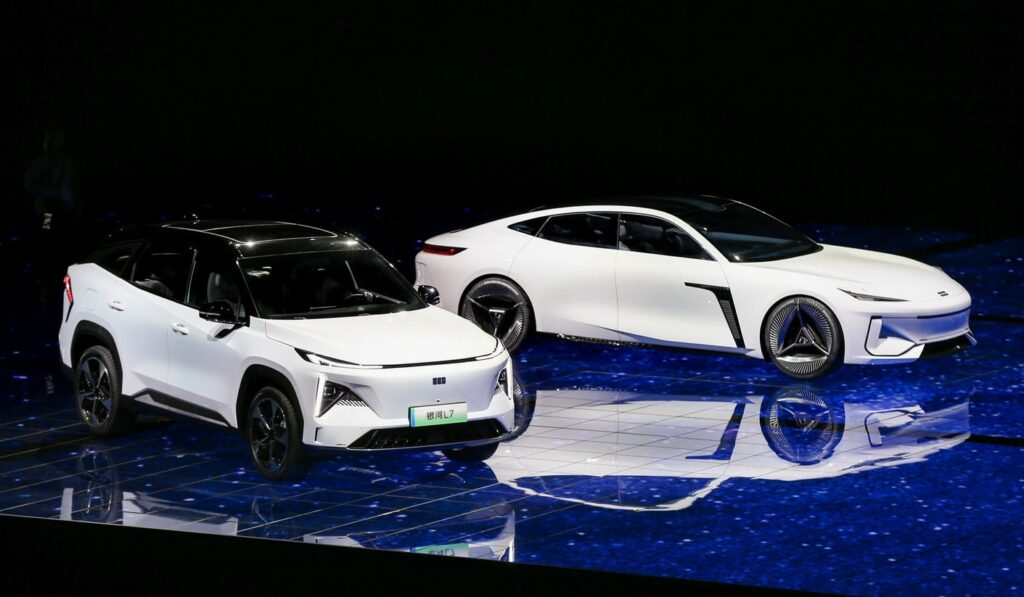
The Galaxy high-end electrified model range begins with the Geely Galaxy Light EV concept and the Galaxy L7 plug-in hybrid SUV. These models will employ a dedicated electrified architecture, along with E-CMA for its long-range hybrid models. 7 new models in the Galaxy range are planned for debut in the next 2 years, where 4 of these will be long-range hybrid models.
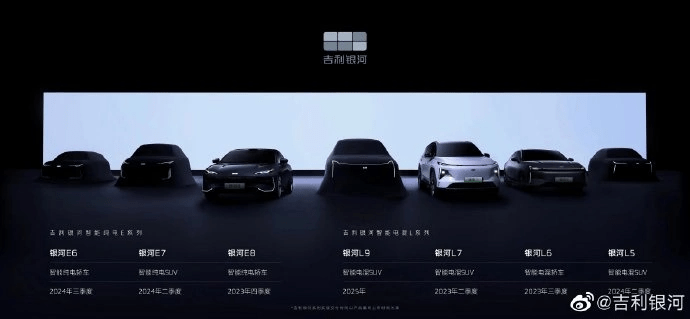
| Galaxy product name | Delivery |
| E series (EV) | |
| Galaxy E6 | Q3 2024 |
| Galaxy E7 | Q2 2024 |
| Galaxy E8 | Q4 2023 |
| L series (PHEV) | |
| Galaxy L5 | Q2 2024 |
| Galaxy L6 | Q3 2023 |
| Galaxy L7 | Q2 2023 |
| Galaxy L9 | 2025 |
Galaxy Light EV concept
Geely Galaxy Light EV
The Galaxy Light EV is an intelligent electric prototype, that demonstrates the results of Geely’s Ripple aesthetics being inherited and evolved in the new era. The Galaxy Light is a wide-bodied electric coupe with a low center of gravity, rendering a posture resembling a “crouching tiger”. Thanks to the concise and smooth profile, the vehicle boasts an exceptional aerodynamic performance with a drag coefficient of just 0.19Cd.
It will come equipped with lidars, radars, and even satellite receivers as Geely’s subsidiary Geespace aims to have 72 satellites in orbit by 2025. This will offer full global coverage for Geely Galaxy vehicles, thus offering the positioning capability “with no blind spots anywhere in the world”.
Galaxy Light’s cockpit offers a spacious seating room. The massive through-type screen, coupled with the LED displays at the left and right door panels, and flexible displays for the rear seats renders a futuristic atmosphere that makes passengers amidst the galaxy and replicates the beauty of China’s poetic scenic spot, West Lake.
The design that integrates the suspended audio system, fragrance dispenser, and ambient lights is inspired by the “Three Pools Mirroring the Moon”, which is honored as the “First Scenic Spot of West Lake”. In addition, the central armrest box is designed with the West Lake shoreline as inspiration, with light and shadow interweaved and the water rippled.
The concept car is missing physical rearview mirrors, door handles support NFC unlocking, and even has a drone port in the rear where UAVs can land and charge. It will be interesting to see which features will make it to production. The production version of the Galaxy Light EV is expected to be unveiled towards the end of the year.
Geely L7
Geely Galaxy L7
Positioned as an A-segment SUV, the L7 will boast three key innovative technologies, namely, the Aegis battery safety system, the NordThor Hi-X 8848 electric hybrid technology, and the brand-new Galaxy NOS (Geely’s full-stack in-house developed distributed operating system).
The Galaxy L7 PHEV SUV focuses on safety and cruising range. It adopts Aegis battery safe system, which, together with battery management system BMS 3.0, adds 8 protection layers for battery safety. L7 is a compact SUV with a size similar to Honda CR-V. The dimensions are 4,700/1,905/1,685 mm and a wheelbase of 2,785 mm.
The interior features 4 large displays: a 10.25-inch instrument panel, a 13.2-inch central control screen, a 16.2-inch co-pilot screen, and a 25.6-inch HUD screen. Galaxy L7 comes equipped with Qualcomm Snapdragon 8155 chip and a new Galaxy N-OS operation system. Geely claims a significant improvement in application speed, voice command, wake-up speed & overall performance.
The hybrid powertrain NordThor Hi-X 8848 (8848 is the height of Mount Everest in meters, suggesting that Geely’s powertrain is the top), has 287 kW of power in the base variants, and 488 kW of power in the performance version. According to Geely, the thermal efficiency is 44.26%, ranking first among mass-produced hybrid engines. The vehicle is equipped with a 3-speed DHT electric gearbox.
The top speed of Galaxy L7 is 200km/h, while it can accelerate from 0-100km/h in just 6.9 seconds. Geely says it has 20% better acceleration than other PHEVs in its class. With a claimed fuel consumption of 5.2 liters/100 km (19.23 km/liter), the Galaxy L7 can drive with the full tank and full charge up to 1,370 km under CLTC conditions. Presales of Galaxy L7 have already started whereas the price will start at 200,000 yuan ($29,000).
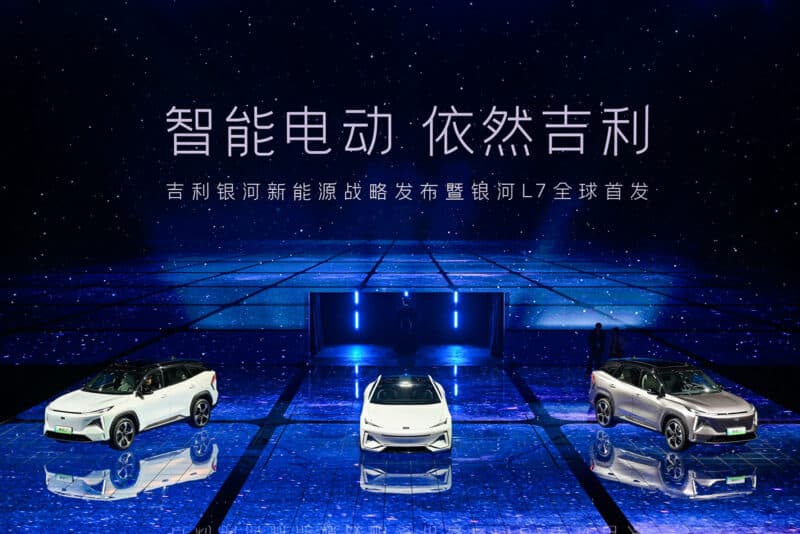
Geely Auto sold around 1.433 million vehicles (+8% YoY) in 2022, 328,727 units of which were NEVs. Notably, the penetration rate of Geely’s NEVs in 2022 has tripled over the previous year, with several months seeing a percentage exceeding 30%, indicating a growing recognition from both the market and consumers over Geely’s NEV products.

A computer animation professional with over 23 years of industry experience having served in leading organizations, TV channels & production facilities in Pakistan. An avid car enthusiast and petrolhead with an affection to deliver quality content to help shape opinions. Formerly written for PakWheels as well as major publications including Dawn. Founder of CarSpiritPK.com

